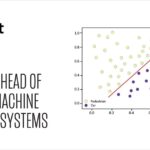Why Data Labeling Deserves Strategic Focus
The future of artificial intelligence and machine learning rests on the shoulders of data scientists and engineers. Research has found that data scientists and engineers spend roughly 80% of their time preparing data for artificial intelligence and machine learning models, with the remaining 20% on actually building the model itself.
Because so much effort goes into preparation, the quality of labeling determines whether the final model succeeds or fails. Treating data labeling as a strategic priority ensures stronger models, faster deployment, and more reliable outcomes.
Pros & Cons of In-House Data Labeling
Companies typically default to their data science and engineering teams when it comes to how they generate, manage, and annotate their data. This in-house approach to data labeling brings many benefits, including the development of consistent labeling processes, a replicable system for managing data (something all companies need sooner or later), and a feedback loop that continually fosters best practices in the aggregation of data for use within AI or ML models.
However, data labeling is typically an expensive and time-consuming process. In the world of startups, developing a perfect system for data gathering and utilization isn’t always something they’ll have the time and resources to develop. These same companies will also need to hire more data scientists and engineers than they might be able to afford. Basically, outside of big companies, labeling data in-house isn’t a practical solution. Labeling data in-house also requires a company to invest in either licensing tools from a third party or building the annotation tools themselves. Both come with added benefits.
But it also doesn’t need to be done manually. Platforms exist today that companies can leverage to streamline many of the manual processes around data labeling. These platforms also include external resources in the form of outsourced and crowdsourced data labeling, effectively lifting the burden from internal data engineers.
In-House Data Labeling
| Pros | Cons |
|---|---|
| – Homegrown, consistent annotation process can yield long-term reliability and success. | – Not always practical, depending on your data and company size. |
| – Annotation feedback loop allows you to constantly improve. | – Expensive and time-consuming to build a coherent annotation process from scratch. |
| – Strong quality control. | – Tool sourcing is time consuming and expensive. |
| – Choose your own tool or build it in-house. | – Depending on data type and size, data may require enterprise-level manpower to annotate. |
Pros & Cons of Crowdsourced Data Labeling
Crowdsourcing is a great avenue for companies that find themselves with limited resources and a strong need for an ML or AI application. Crowdsourcing marketplaces like Amazon MTurk empower companies with 24/7 access to a worldwide workforce. This workforce can be leveraged in tandem with in-house data labeling teams, effectively giving companies that can manage it a best of both worlds scenario. It’s a flexible way of expanding annotative capacity, but comes with the caveat of inconsistent annotation quality, as you can’t be certain who is labeling your data.
Crowdsourcing is an excellent option for companies that can’t afford an in-house annotation workforce. Knowing how to choose a crowdsourcing partner is, therefore, key when leveraging this approach. Some things to take into consideration include:
- Quality: Does the company you’re evaluating actually qualify the people who will be labeling your data? What type of quality control processes are in place as a contingent against inconsistently labeled data?
- Security: Sharing precious data isn’t something companies do with just anybody. As such, confidentiality is a prime concern for any company looking to leverage crowdsourcing. Companies should therefore audit their vendor for key security certifications such as ISO to ensure their data is protected.
- Experience: Is this vendor a reputable company with strong references? Who have they served in the past successfully enough to boast about on their website? What kind of data have they annotated in the past?
- Technology: The true name of the game. Which annotation tools does this provider use, and which tools have they built themselves? How do these tools assist in managing the crowdsourced data annotators while ensuring quality output?
The greatest benefit of crowdsourcing lies in pilot projects. Before committing to any crowdsourcing provider, companies should first attempt a pilot program that serves as a litmus test for the validity of the data outputs. If it goes well, then you’re ready to go full-speed ahead.
Crowdsourced Data Labeling
| Pros | Cons |
|---|---|
| – 24/7 worldwide annotation workforce. | – Quality control isn’t guaranteed. |
| – Highly affordable and rapidly deployable. | – Hard to achieve repeatable and consistent results over time. |
| – Can be leveraged alongside in-house labeling or with a provider. | – Using an external workforce limits your team’s ability to learn and develop their own processes. |
| – Pilot projects allow you to try before you buy. | – Can be high-maintenance and time-demanding to manage. |
Pros & Cons of Outsourced Data Labeling Services
The happy medium seems to be in outsourcing annotation to data service providers, who offer the tools, talent, and manpower to rapidly and consistently tackle large volumes of data. While it can be a more expensive option than leveraging annotation tools or partners that use crowdsourcing, the quality of the data is vastly superior by comparison, thanks to the provider’s hand-selected annotation workforce. Data annotation service providers also bring years of experience in the form of tried-and-true processes that are repeatable and systematic, resulting in a reliable throughput of exceptionally annotated data.
Data service providers will typically consult with you to understand your goals, business objectives, data management, and data types to then create an end-to-end workflow solution that’s customized to your needs. The best part about working with a tried-and-true data labeling service provider is the breadth of data labeling experience they bring across the different data types. The added benefit of having a trusted partner to consult with around all things data annotation, machine learning, and artificial intelligence is certainly no small consideration either. The iterative nature of the development of ML/AI means that a trusted solution partner can travel along with you for the entire journey.

While typically more expensive on a unit basis than crowdsourcing, data labeling service providers are an exceptional option for companies that can’t afford in-house annotation and/or would still prefer not to utilize crowdsourcing. Ultimately, you have to consider the all-in cost of getting high quality usable data. An added benefit of working with a service provider is that they’re low maintenance and consultative. Their approach is meant to relieve you of the burden of data labeling. To do so, a data annotation service provider will consult with you to ensure your needs are clearly understood and fully executable from their side.
Data Labeling Service Provider
| Pros | Cons |
|---|---|
| – Hand-selected annotation workforce equates to reliable quality control. | – More expensive than crowdsourcing, but evens out when factoring in secondary costs |
| – More affordable than in-house data labeling. | – Relying on an external workforce means internal teams won’t learn on their own. |
| – Consultative approach helps define your needs and accommodate them. | – Time-consuming to get a project up and running, depending on complexity of data. |
| – Ability to rapidly and accurately annotate large sums of multiple data formats. | – Professional-level approach can be overkill for simple projects. |
| – Strong security protocols. |
What’s Your Best Data Labeling Option?
While in-house is typically considered the holy grail of data labeling, it isn’t always practical based on the stage of your company. Typically speaking, any company with the means to label in-house will do so accordingly.
As such, you’re likely trying to decide between crowdsourced data labeling or outsourcing it to a professional data labeling service provider.
While crowdsourcing has its upside, it often ends up that you spend more time managing the quality than you might have done in-house. The upside to a data labeling service is that a professional group takes care of everything, essentially liberating you to focus on other efforts internally. Best of all, quality is guaranteed, and it probably isn’t as expensive as you think.
Experience Quality Data Labeling Services from iMerit
Behind every successful AI model is carefully labeled data that meets the highest standards of accuracy and consistency. iMerit provides end-to-end data labeling services designed to handle the scale and complexity of real-world AI and machine learning projects. Our team combines automated annotation technology with world-class subject matter experts to deliver precise, secure, and production-ready datasets.
iMerit supports a wide range of use cases, including autonomous mobility, healthcare AI, geospatial technology, and more. With expert-in-the-loop processes, we ensure consistency, capture edge cases, and meet regulatory requirements where needed. Our approach reduces the burden on internal teams while accelerating speed to production and improving model performance.
Contact our experts today to learn how iMerit can deliver the high-quality data labeling your AI models need to succeed.




























